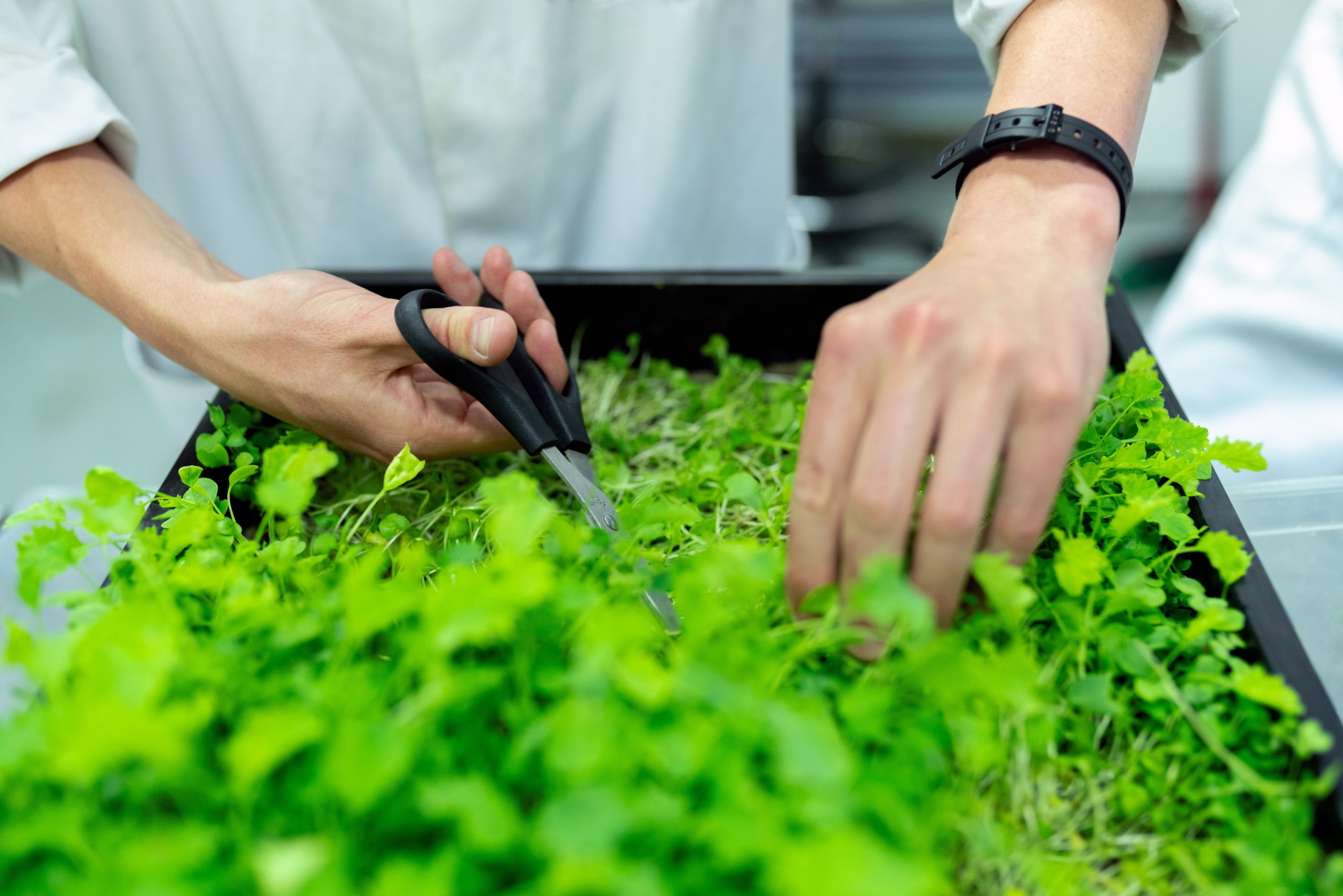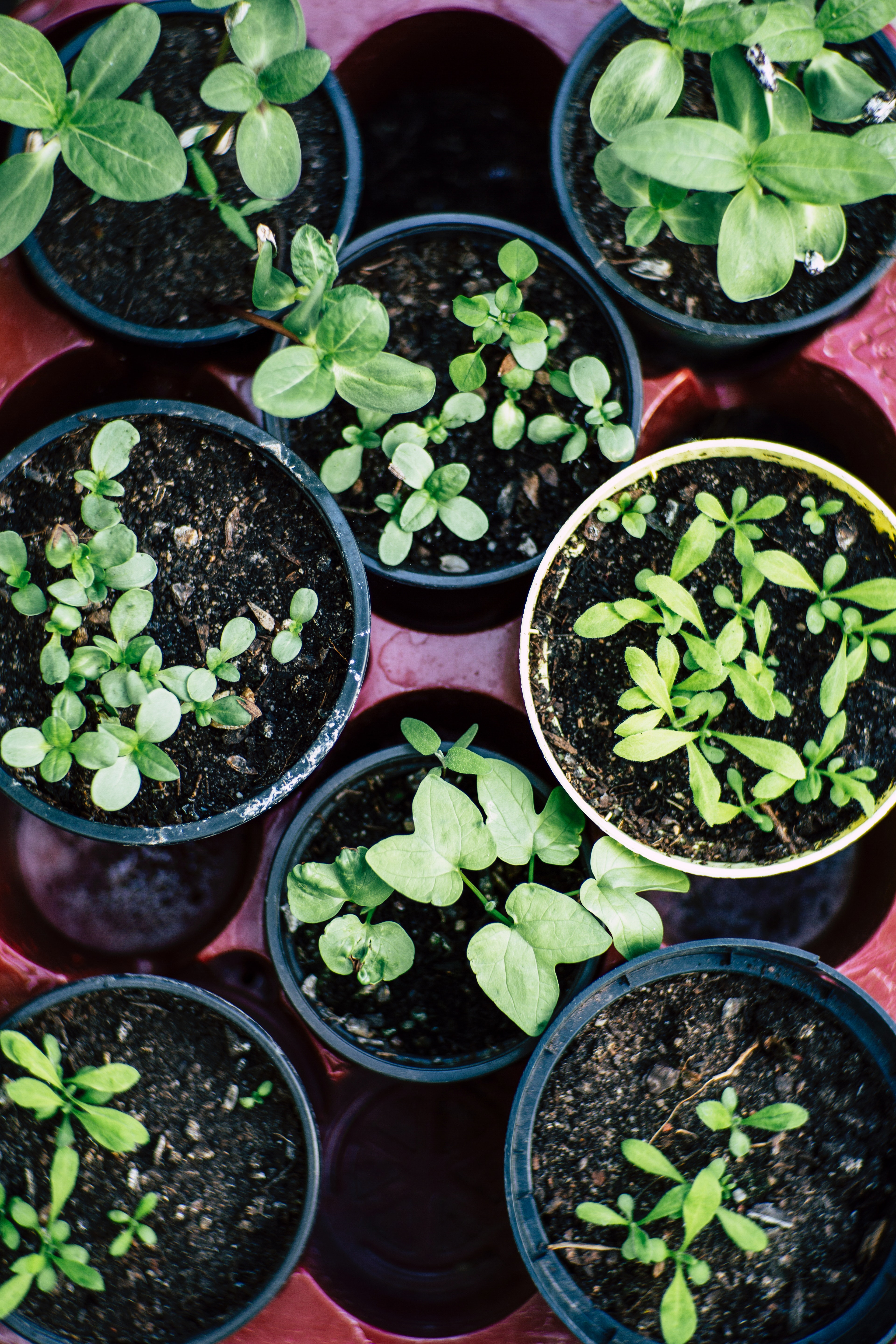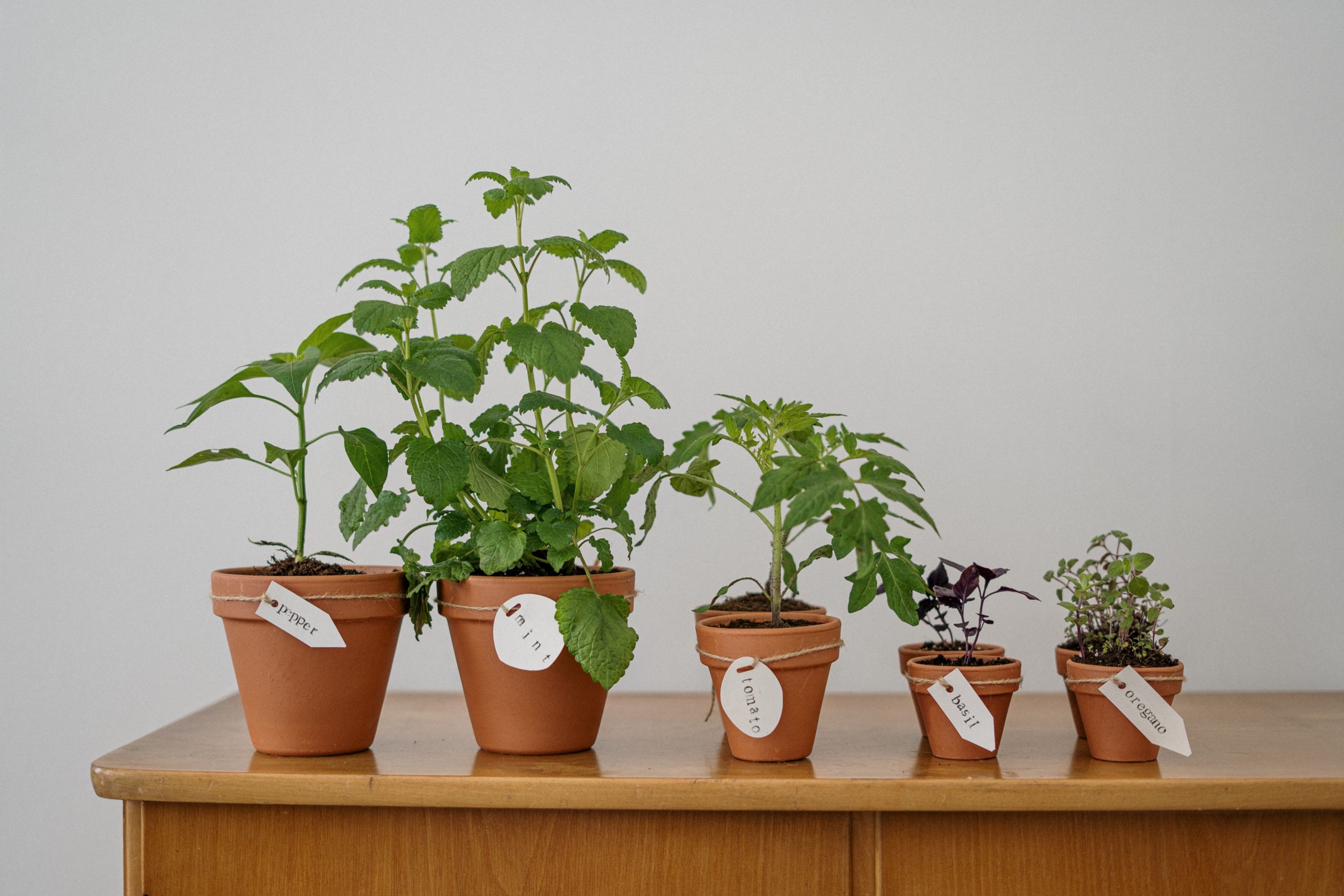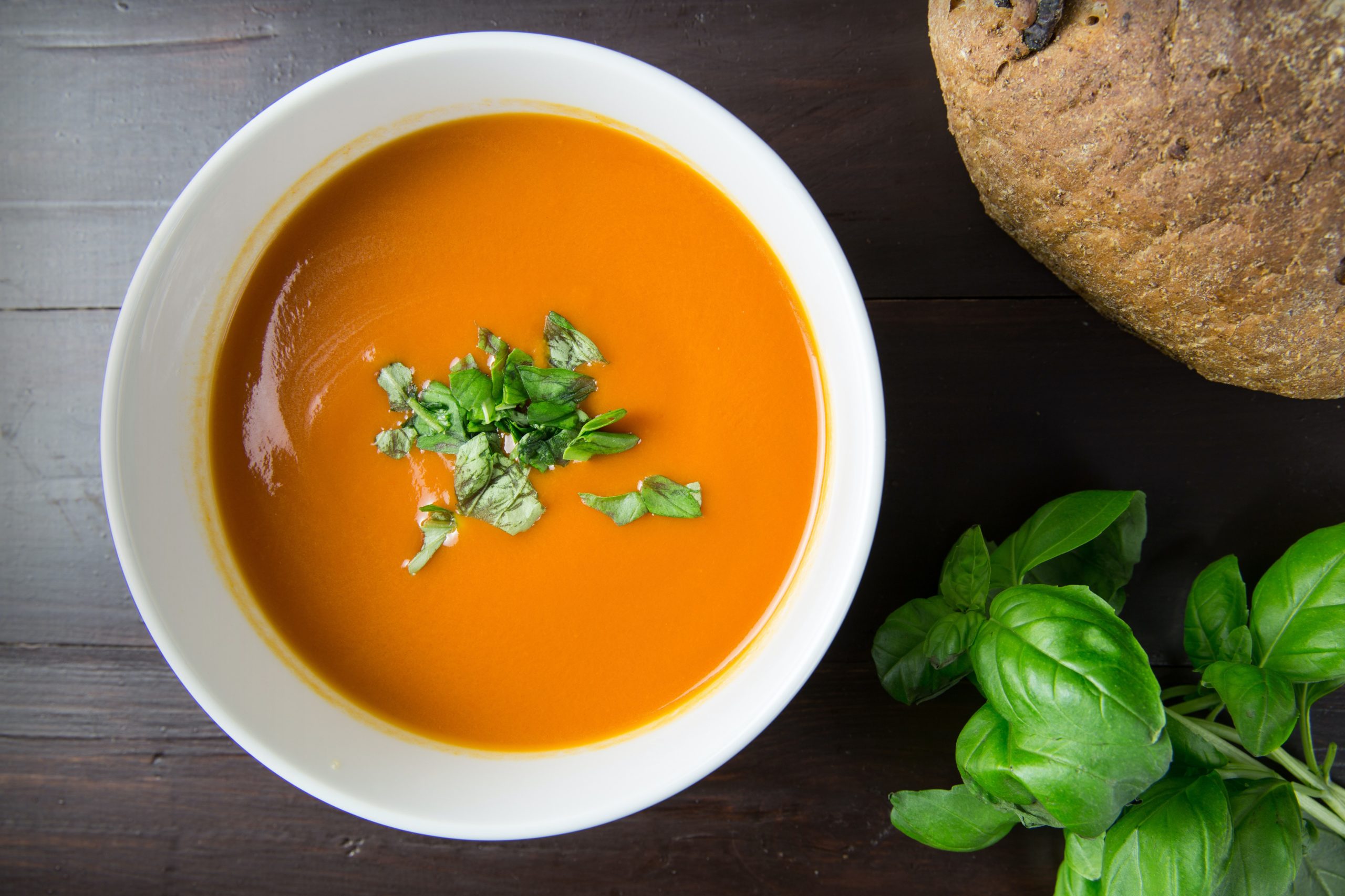
If you’re planning to do a small home improvement project, look no further. You can start your own herb garden with just a few supplies, and reap what you sow in no time.
Herb plants not only brighten up your home, but also give you access to fresh herbs to add flavors to your favorite dishes.
Think a sprig of thyme on your pumpkin soup, a sprinkle of sage on your Thanksgiving turkey, or when feel like making pasta from scratch, a harvest of freshly-picked basil is just a few steps away. Think of it as having your own “from garden to table.”
Benefits Of Growing Your Own Herbs

Besides upgrading your kitchen prowess, here are the many things you’ll get out of having your own herb garden.
1. It’s good for your mental health.
Gardening, taking care of plants, or anything that has gets you out for a breath of fresh air is positively good for your mental health. Research shows gardening improves mood, and releases feel-good chemicals in the brain such as serotonin and dopamine.
With the pandemic and the past lockdowns confining people inside their homes, many started their own small gardens as a way to do something fun, as well as to reduce anxiety and depression.
Having an herb garden is a great motivation to do more home cooking. In fact, many unlocked a hidden talent or rediscovered their love for cooking due to the lockdowns. We all know how cooking your own meals is much healthier than buying take-out or microwaveable frozen meals.
2. You get access to fresh ingredients.
Herbs have an amazing capacity to turn an otherwise boring meal into a grand and gourmet one. Take it from your most-admired chef celebrities like the late Anthony Bourdain, who said herbs can instantly make your food look fresh and sexy.
Parsley: great for just about any kind of soup or sauce.
Rosemary: often paired with lemon to make a tasty oven-baked chicken.
Basil: the perfect herb for Italian fare like pizza and pasta.
Dill: instantly transforms seafood dishes. It’s great for sandwich spreads too!
Cilantro: the go-to herb for Mexican and Vietnamese cuisine.
Mint: a great garnish to cocktails and mocktails, and even tea-infused drinks!
Of course, you could always opt to buy the dried or dehydrated ones from the grocery. But those can never compare to the fresh ones, not only in terms of flavor, but also the health benefits.
3. It saves you money.
The thing is, when you’re cooking, you don’t need a lot of herbs to garnish your dish. In the grocery, you often have to buy a huge bunch of herbs for a single recipe, and after using some of them, the rest end up rotting in your fridge.
With your own herb garden, you get to save money, and reduce food wastage too. Instead, you can just snip off a handful, or as much as you need at a time.
4. It’s easy to maintain.
An herb garden won’t cost you an arm and a leg, it won’t eat up your time too. It’s relatively easy to maintain.
All the herbs need is a small space, an access to sunlight, water, and some pruning to keep it healthy. You don’t have to be a seasoned gardener to grow a thriving and lively herb garden.

Getting Started With Your Own Herb Garden

Now that you know the many benefits of growing your own herbs, it’s time to bring your herb garden project to fruition. Here’s how you can get started.
Step 1: Choose your herbs.
For a newbie gardener such as yourself, it’s best to start with the easiest herbs to grow. The following plants are considered the most easygoing bunch.
Sage
As a low-maintenance and sturdy herb, sage can be planted once, and harvested for years. All it needs is a full sun (around 6 to 8 hours per day), good air circulation, and a well-drained soil full of organic matter such as compost.
Basil
Basil does well in a well-drained soil, with plenty of sunlight. It’s considered one of the easiest herbs to grow, as it grows pretty quickly, and, when pruned well, can supply you with a ½ cup’s worth of basil each week.
Basil is perfect for beginners since it will communicate well if you’re not watering enough by looking sad and wilty. It perks back right up after a good shower.
Mint
Mint is known for growing like nobody’s business. Just remember to give it its own container, and space it inches away from other plants. Besides that, mint is widely considered the downright easiest plant to grow.
Thyme
Thyme is an aromatic, wonderful, and versatile perennial herb. Once established and firmly-rooted, thyme prefers to be underwatered than overwatered. Thyme loves plenty of sun, and prefers to be in its company all day long. Indoors, you can place thyme under a bright windowsill.
Parsley
Parsley does best in moist, well-drained soil and can grow in partially-shaded areas.
Other easy-to-grow herbs are rosemary, oregano, chives, and cilantro.
Step 2: Buy starter plants or seedlings, instead of seeds.
Since you’re just starting out, save yourself the heartache, and two to three weeks of grow time by getting starter plants or seedlings. All you need to do is to replant them, and you are now ready to use your herbs.
Step 3: Get the right soil.
Pro tip: in the gardening store, the attendant will ask you what kind of soil you need. For your herbs, forget garden soil like top soil or black earth. Garden soil takes forever to dry out. Purchase potting soil instead, as this is lighter and more porous.
Step 4. Choose your pots.
This is a common question: what kind of pots should you buy? You can opt for any material (clay, wood, resin, and metal), just as long as the pot provides enough drainage. A good plant pot must have enough holes in them to let excess water escape. Lastly, choose a container that matches the size of the herbs you’ll grow.

Step 5. Complete your supplies.
Since you’re in the gardening store already, don’t forget to shop for these supplies as well: a small shovel or something to dig with, extra soil for replanting, and plant food. Purchase some compost or fertilizer to keep your soil happy and healthy. Choose organic alternatives, such as coffee grounds, seaweed, and liquid fish.
Step 6: Get planting!
Straight from the store, you can now eagerly start planting. Place those seedlings in pots filled with soil, then pick the best spots for your herb plants. If you have space outdoors, like a patio, or a balcony, that’s great! If you live in a condo, herbs can thrive indoors as well. Just make sure to find a spot where the sun streams in like a bright windowsill.
Next, be prepared to give your herbs the care they need, which means constantly checking on them, and regularly watering them. But be careful not to overwater as to drown them. Water until the soil is damp all the way through, not soaking wet. To check, poke your finger into the pot. If the dirt is dry an inch below the surface, that means it’s time to water.
Armed with your supplies, and after soaking in all these helpful information, now you’re ready to start your own herb garden. In just a few weeks, you’ll be picking herbs straight from the pots, unleashing your inner Barefoot Contessa, and cooking tasty and healthy dishes. Don’t forget to take a lot of pictures, and boast to your friends that you are now growing your own food.
Tags


0 Comments